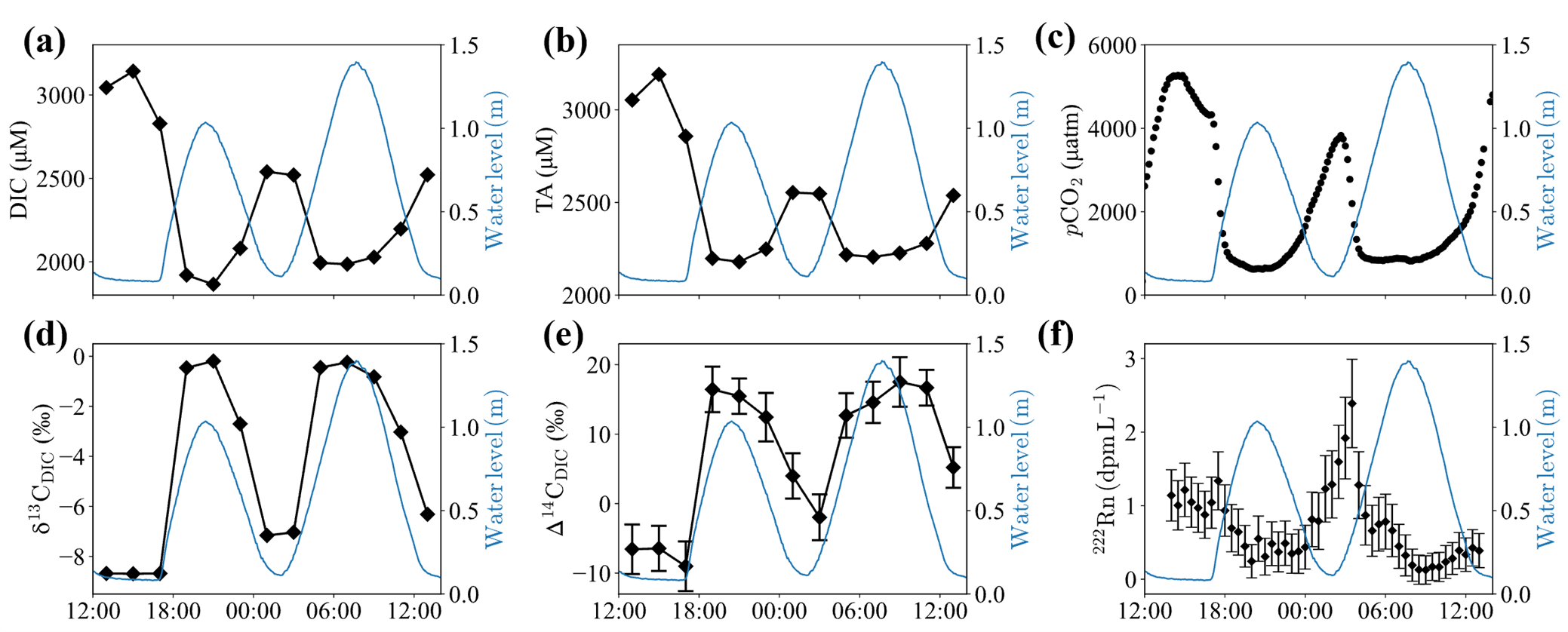2025-07-03 東京大学,海上・港湾・航空技術研究所 港湾空港技術研究所
 図1:吹通川における24時間の水質変動(原論文より引用)
図1:吹通川における24時間の水質変動(原論文より引用)
(a)溶存無機炭素、(b)全アルカリ度、(c)水中CO2分圧、(d)溶存無機炭素の安定炭素同位体比、(e)溶存無機炭素の放射性炭素同位体比、(f)ラドンの時系列変化。グラフ内青線は水位変化を意味する。
マングローブ沼地から海洋へ水が流れる下げ潮時に(a)溶存無機炭素濃度が増加し、(e)放射性炭素同位体比が減少する様子が確認されます。
<関連情報>
- https://www.k.u-tokyo.ac.jp/information/category/press/11666.html
- https://www.k.u-tokyo.ac.jp/information/upload/d8214a9c0cf06747bbf657deb07b76ff1190b94b.pdf
- https://aslopubs.onlinelibrary.wiley.com/doi/10.1002/lno.70060
放射性炭素分析により、亜熱帯マングローブ生態系における古い土壌有機炭素の溶存無機炭素への分解が明らかになった Radiocarbon analysis reveals decomposition of old soil organic carbon into dissolved inorganic carbon in a subtropical mangrove ecosystem
Wataru Nakamura, Kojin Tsuchiya, Kenta Watanabe, Toshihiro Miyajima, Yosuke Miyairi, Yusuke Yokoyama, Phyo Thet Naing, Tomohiro Kuwae, Jun Sasaki
Limnology and Oceanography Published: 07 May 2025
DOI:https://doi.org/10.1002/lno.70060
Abstract
The outwelling of remineralized dissolved inorganic carbon (DIC) from the subsurface soil layer through tidal pumping has recently been noted for its importance in the blue carbon budget of mangroves. However, the age of soil organic carbon (SOC) that has been decomposed into DIC remains uncertain. In this study, two distinct models (a two endmembers model and three endmembers model) were utilized to verify the age of the decomposed SOC, employing radiocarbon (Δ14C) as a tracer. We conducted a 24-h measurement of DIC and DIC isotopes (δ13CDIC and Δ14CDIC), in addition to vertical profiles of Δ14C of SOC, in a subtropical mangrove ecosystem in Japan. The Δ14C expected for the source SOC that decomposed into DIC exhibited a comparable trend for the two distinct models, with mean values ranging from −86.6‰ to −16.8‰. The Δ14C values were converted to calendar age using the OxCal program, with the calibration curve from IntCal20 being employed. This conversion revealed that DIC in the mangrove creek originated from SOC buried over a century ago. Given that mangroves are confined to the intertidal zone, it is likely that there are spatial constraints on the burial of SOC in mangrove ecosystems. Consequently, the transition from SOC to the DIC carbon pool in the ocean could be a key process in supporting long-term carbon sequestration over millennia.



